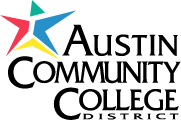University Business Magazine: Turning Malls into a College: Transforming malls into campuses and schoolhouses into malls
James Martin and James E. Samels
October 5, 2018
The 1983 comedy Trading Places starring Eddie Murphy and Dan Aykroyd tells the tale of a slick commodity broker and a homeless hustler whose lives cross when they are compelled to swap socioeconomic roles. In some ways, the story is based on a contemporary version of Mark Twain’s classic The Prince and the Pauper.
Looking back 20 years, we predicted for our readership a trend where failing retail malls would be transformed into satellite campuses and schoolhouses would be converted into malls and other mixed uses. These “Trading Places” prognostications have since proved out.
The education campuses born of shopping malls are in some ways a phoenix rising out of the ashes of what some have called the “retail apocalypse”. Indeed, this trend reversed the common practice of bulldozing malls and schoolhouses—and replacing them with parking garages, condominiums, and skyscrapers.
Fast forward to 2018, when towns are inviting qualified developers to think in new ways about adaptive reuse. This carefully planned, tactical approach to community redevelopment emphasizes designing places in downtown areas that serve the greater public good, often creating venues for aspiring fine, visual, and performing artists, and in the process, fueling the engine of the new Creative Economy.
This creative placemaking trend incentivizes architects, engineers and developers to preserve the historical qualities of aging infrastructure and reimagine new, dynamic campus co-development and joint venture strategies.
A number of these retail shopping malls are transformed into campus-style classrooms, labs and seminar space. At the same time, we observed the preservation of old schoolhouses — now serving mixed-uses while celebrating venerable heritage. These extreme makeovers often combine residences, eateries, microbreweries, bookstores, bakeries and cafes, boutiques, and, in some, smart classrooms and community performance space.
On the road again
Against this backdrop, we begin this month’s journey in the Pacific Northwest at the site of the historic Kennedy Schoolhouse which opened its doors in in 1915 in the Northeast suburbs of Portland, Oregon. Today, the Schoolhouse has been transformed into a quaint 57-room hotel with a restaurant, multiple small bars, movie theater, soaking pool and microbrewery, together with conference meeting space, small gymnasium, and library. In Portland, locals actually want to stay after school and have a pint in the classroom, enjoy good whiskey in detention, and even take in a movie in the fully restored auditorium.
Our second stop is at the Gothic styled West Philadelphia High school built in 1912, now transformed into a residential Commons soon to reopen its doors as West Lofts. This special residential community provides opportunities for affordable and simple elegance.
Our third stop is the Hickory Hollow Mall in Antioch, Tennessee. The original mall declined significantly over the last two decades. Now this Mall hosts Nashville State’s satellite campus, the new Southeast Community Center, the Southeast Branch of the Nashville Public Library and, uniquely, the Nashville Predators’ Ford Ice Center.
Our fourth stop is the Highland Mall in Austin Texas where Austin Community College reengineered the withering Highland Mall into a futuristic campus and regional Workforce Development Center. At the epicenter of this space is the ACCelerator, a high-tech learning lab with over 600 desktop computers, study rooms and classrooms. The ACCelerator offers both traditional classes and individually paced learning.
Our fifth and final stop is the Palm Springs Mall in California which will now serve as the Desert Community College’s new West Valley campus. Recently, the College announced a joint venture with DIGICOM to create a Center For Digital Media Education as a cornerstone of the new permanent Palm Springs campus.
So, as we bring our mall and schoolhouse transformation journey to a close, we sense new opportunities for reimagining both retail malls and venerable schoolhouses for adaptive reuse and creative placemaking. This philosophy and best practice preserves and celebrates precious architectural treasures, yet leverages and monetizes these community assets for the benefit of Downtown merchants and their devoted patrons.
James Martin and James E. Samels are authors of Consolidating Colleges and Merging Universities. (Johns Hopkins University Press, 2017). Samels is president and CEO of The Education Alliance.
Tags: ACC Highland, ACCelerator, transforming malls, University Business Magazine
Back to Top
